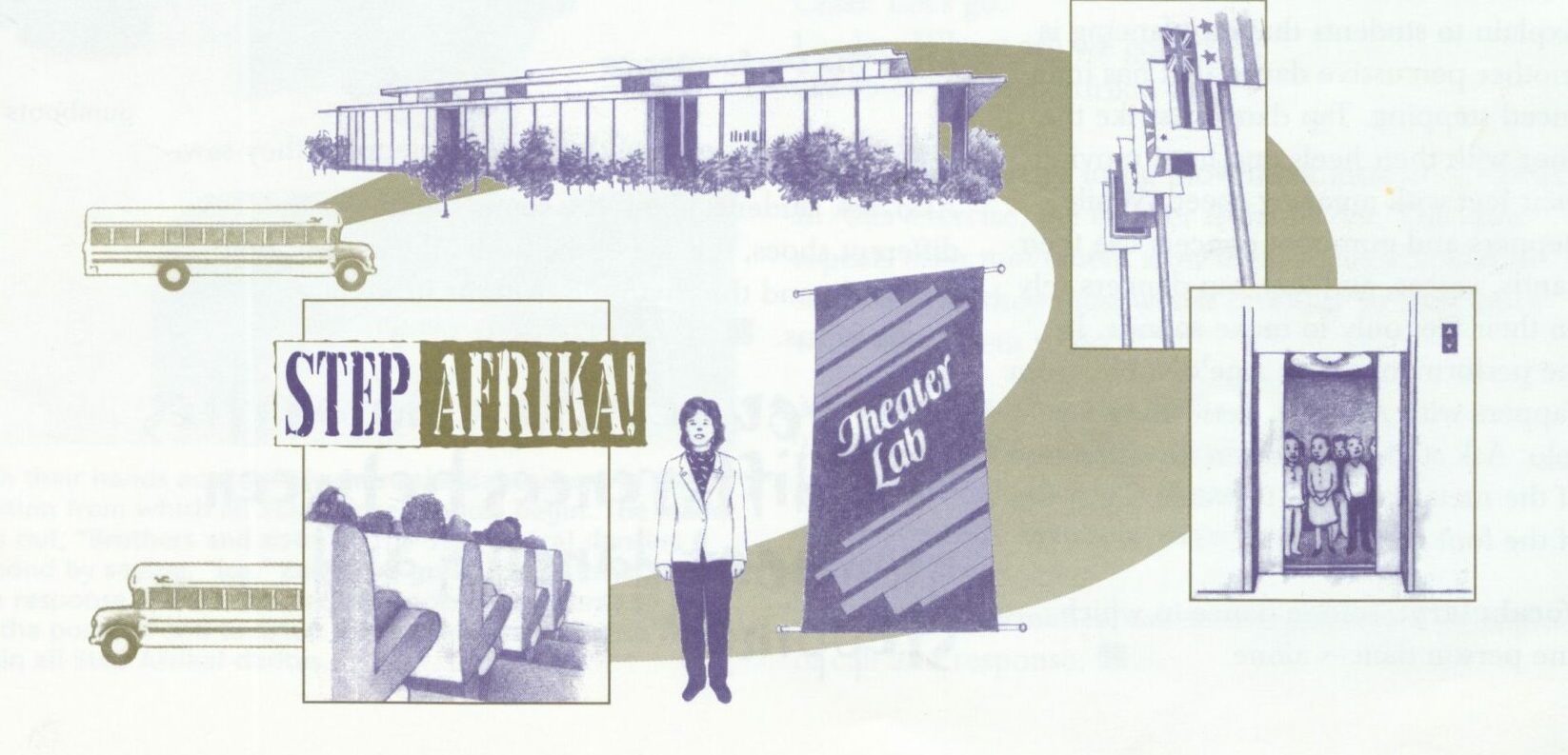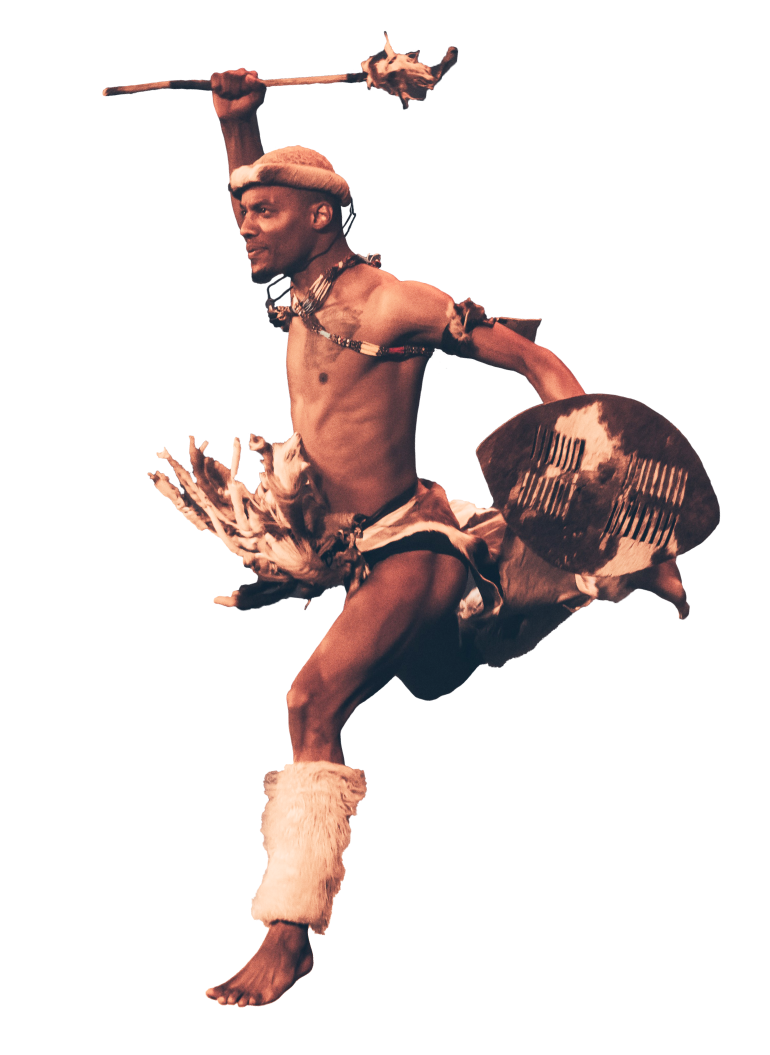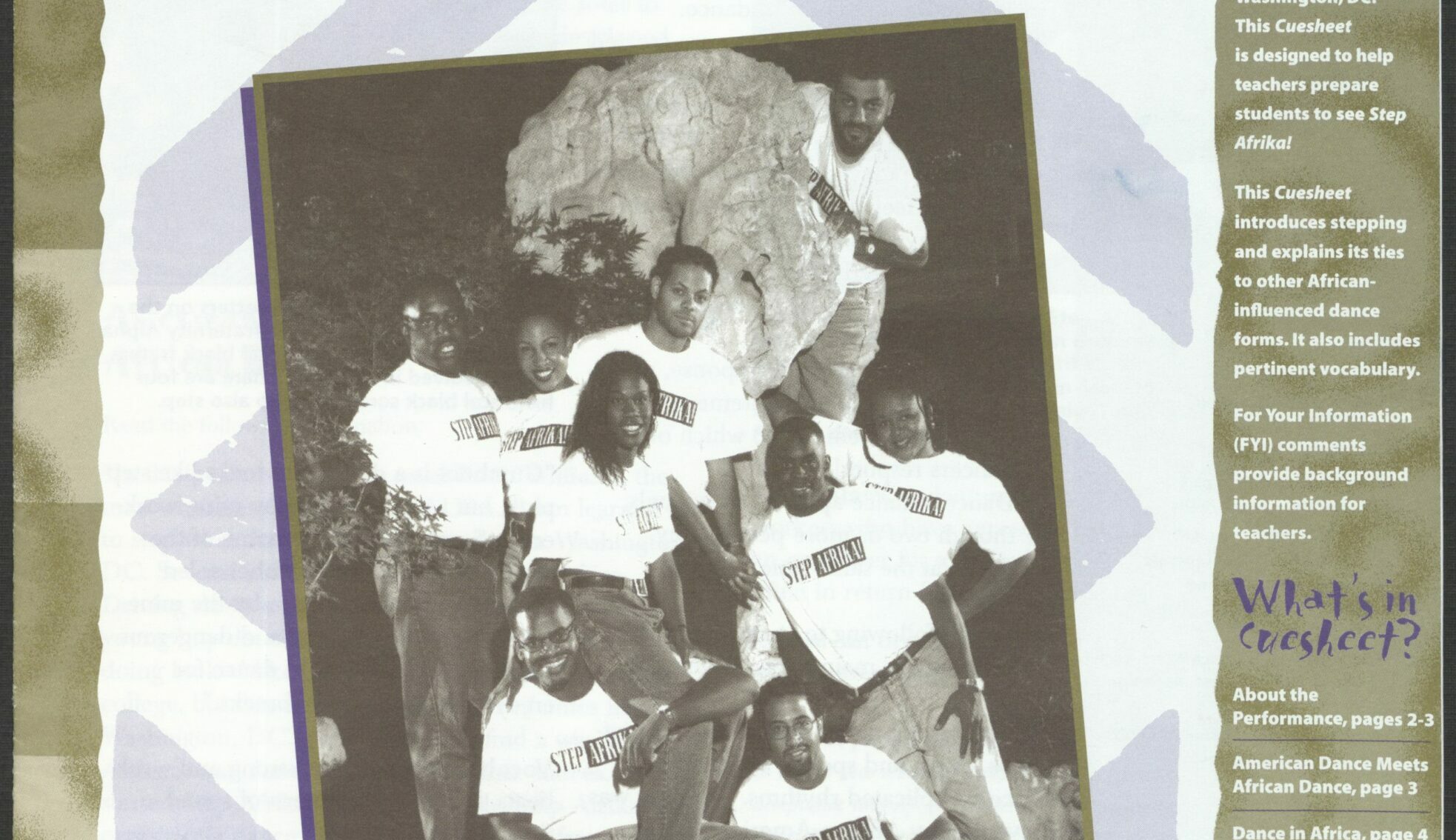In partnership with the Kennedy Center, Step Afrika! introduced its first-ever Educational Guide in 1999 to accompany arts education programming. The cue sheet for teachers was designed to help teachers prepare students to see Step Afrika!. It introduces stepping, breaks down its influences, and provides an overview of artform-specific vocabulary.
Cue Sheet: Step Afrika!
Published on August 1, 1999, by the Education Department of the John F. Kennedy Center for the Performing Arts
“Explain to students that Step Afrika! includes different kinds of dance. Though some of the dances were created in America, they all have been influenced by African tradition. The dances share the following qualities:
- They are percussive, meaning dancers use their feet, hands, and voices to create rhythms.
- They are polyrhythmic, meaning dancers play several rhythms at the same time.
- They involve call and response, meaning a leader makes a statement with words or movements to which other dancers respond.
- Dancers dance apart as individuals, though two or more people may dance at the same time.

Read the following to students to introduce the three main dance forms:
“Stepping is a dance that combines footsteps, claps, and spoken words to produce complicated rhythms. Stepping was invented by African-American college students who were members of clubs called fraternities and sororities. The club members step together to show pride in their fraternity or sorority.
FYI: The performance includes traditional African dances such as Zulu and Pantsula.
“Gumboot is a dance that looks like stepping, but was developed by mine workers in South Africa. The name of the dance comes from the rubber-soled boots — gumboots — worn by the mine workers. Mining is hard and dangerous work, and miners would dance for enjoyment during their breaks.”
Vocabulary:
- rhythms—strong and weak beats that create a pattern of sound through time
- fraternity/sorority—a group of men/women in college who have come together out of friendship and shared interests
- mine—a deep hole dug in the earth from which minerals such as coal, iron, or gold are taken.”
…
VIEW THE FULL 1999 EDUCATIONAL GUIDE HERE
In 1999, the Company officially established a programmatic home in the DMV, performing at schools and community events across the region! Educational programs also followed Step Afrika! on tour, reaching a multitude of cities across the nation:


Be A Part of Our History
Founded in 1994 by C. Brian Williams, Step Afrika! is the first professional company dedicated to the tradition of stepping. Under Mr. Williams’ leadership, stepping has evolved into one of America’s cultural exports, touring more than 60 countries across the globe. To share your Step Afrika! story, visit stepafrika.org/about/. Step Afrika!'s 30th Anniversary Timeline is made possible by the generous funding of Bloomberg Philanthropies, with additional support from the Mellon Foundation and the DC Commission on the Arts and Humanities.
ATTEND A PERFORMANCE
Get TicketsSUPPORT OUR PROGRAMS
Donate NowSTEP AFRIKA! EDUCATION
Learn MoreLEARN ABOUT STEP AFRIKA!
Learn More

 Back to Timeline
Back to Timeline
 Previous Moment
Previous Moment